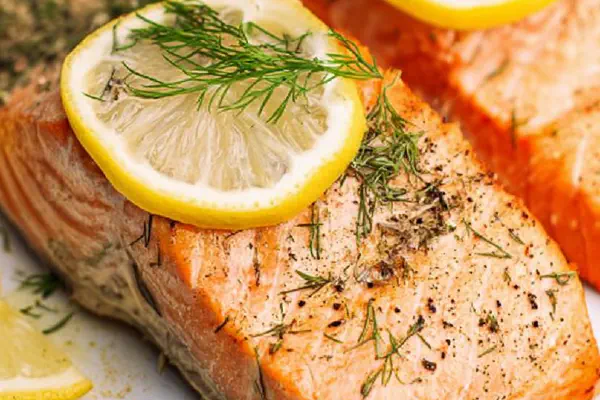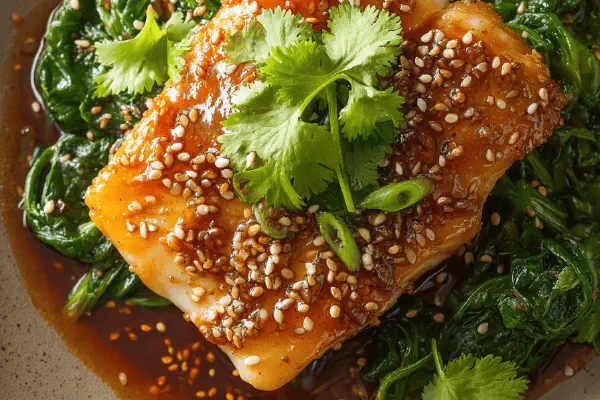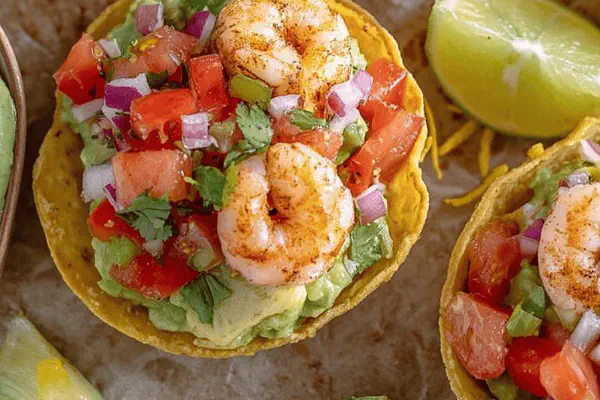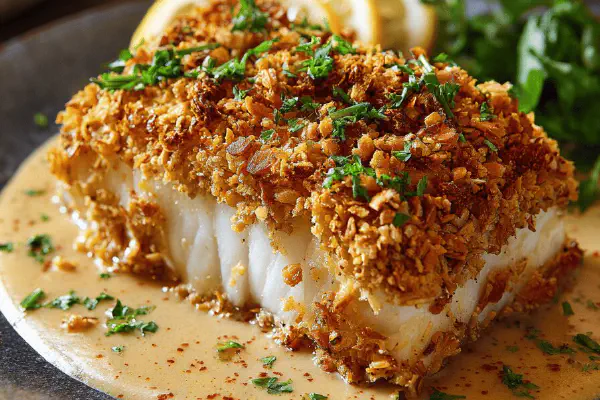Maple Citrus Salmon
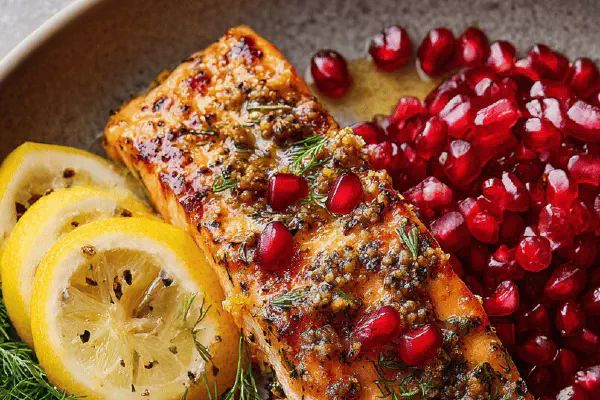
By Emma
Certified Culinary Professional
Ingredients
- 1 filet wild salmon with skin, about 900 g
- 30 g pomegranate seeds, chopped roughly
- 20 ml agave nectar
- 15 ml grainy brown mustard
- Zest of half a lemon
- A few sprigs fresh dill
- Salt and freshly cracked black pepper
About the ingredients
Method
- Set oven rack middle position; preheat oven to 190°C (375°F). Line baking sheet with parchment paper.
- Place salmon skin side down on sheet; pat dry with paper towel. Season it generously with salt and black pepper over the flesh side only.
- In a small bowl, combine the chopped pomegranate seeds, agave nectar, grainy mustard, and lemon zest. Stir gently but thoroughly until sticky and well coated.
- Spoon the mixture evenly across the top of the salmon, pressing lightly to make it adhere to the surface.
- Transfer to oven. Listen for faint crackle as the sugars caramelize. Roast about 18 minutes, maybe a bit less if your filet is thin. Look for salmon flesh to go opaque and flake under light pressure with a fork but still moist in the center.
- Remove from oven. Sprinkle fresh dill on top while still warm. Let it rest a few minutes before slicing—don’t skip this or the juices run out.
- Serve warm or just barely lukewarm, so the topping still clings and shines.
Cooking tips
Chef's notes
- 💡 Pat the salmon skin very dry. Moisture creates steam, ruins crispness. Salt pulls moisture out; salt before drying helps texture. If skin is wet, no sear possible. Oven heat fluctuates; preheat fully to 190°C for steady roasting. Avoid skipping dry step - surface dampness causes uneven cooking marks and soggy fish skin, no caramelization on glaze.
- 💡 Spread pomegranate and agave mix evenly but press lightly onto flesh top. Prevent topping falling off but avoid squashing. Sticky sugar caramelizes best close to fish. Use spatula edge or back of spoon for control in layering glaze. Don’t pour over skin or sides. Watch oven closely - sugars crackle; listen helps know if roasting right.
- 💡 Substitutions matter: pomegranate seeds replace cranberries but keep tart pop. Dried cranberries rehydrated give similar texture but watch moisture. Agave instead of maple keeps sweetness gentle; honey works but can overpower mustard sharpness. Grainy brown mustard preferred over Dijon for bite and texture; smooth Dijon okay if chunk texture off-putting.
- 💡 Lemon zest key; juice adds too much liquid, wet topping. Add zest last in mix for zing. Fresh dill added after baking preserves aroma and fresh herb flavor; adding too soon dulls herb notes and becomes bitter. Frozen herbs lose brightness, skip if can't get fresh. Let salmon rest 3–5 minutes before slicing to allow juices to settle.
- 💡 Visual and tactile doneness check beats timer. Salmon flesh turns from translucent pink to opaque pale orange shining. Fork test with gentle pressure flakes fish but keeps moist center. If flesh dry or chalky, oven too hot or overcooked. Lower temp from 200°C to 190°C helps keep texture tender. Thinner filets need less time; watch carefully.
Common questions
Can dried cranberries replace pomegranate seeds?
Yes but soak them briefly in water so they swell. Texture not same - less pop, more chew, flavor milder. Adjust sweetness slightly - dried cranberries tend sweeter than fresh pomegranate.
What if I don't have grainy mustard?
Use Dijon smooth or whole-grain mustard mix. Smooth Dijon works but texture less rustic. Whole-seed mustard adds crunch similar but darker flavor. Avoid sweet American mustard - changes flavor balance.
How to avoid salmon sticking to the baking sheet?
Line sheet with parchment paper. Dry skin and use high oven temps. No oil needed if skin dry - it crisps and releases better. Avoid turning fish when hot; let cook through, lift gently from skin side.
How to store leftovers?
Refrigerate sealed container up to 2 days. Texture changes; reheat gently at low temp to avoid drying. Cold slices fine for salads or sandwiches but lose glaze crispness. Freeze not recommended; flaky fish suffers.
